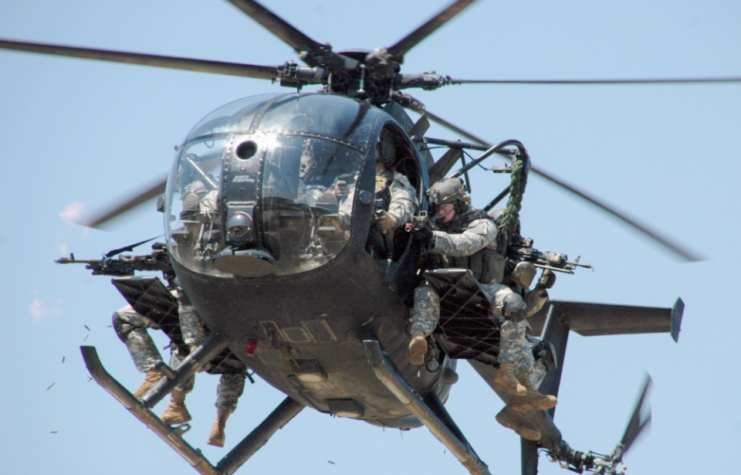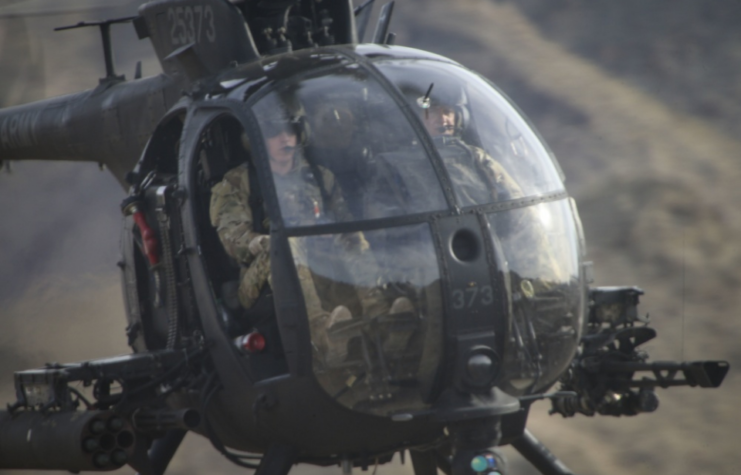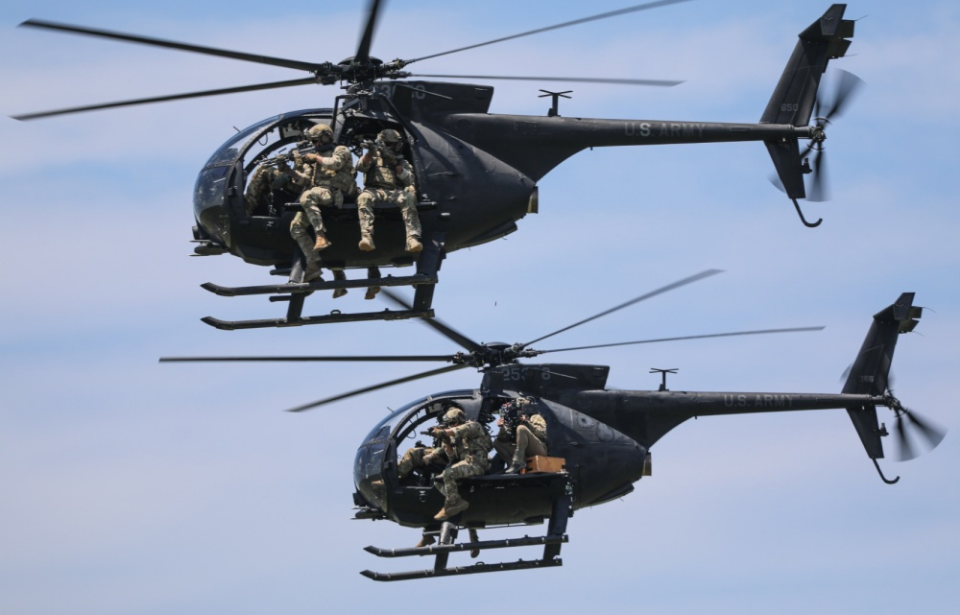The AH-6 and MH-6 Little Birds may be coming to the end of their 40-year career, according to some conversations within the U.S. Special Operations Command. This small helicopter has been a hallmark of U.S. special operations, thanks to its small size and brilliant maneuverability, and has become a legend within their community.
But the helicopter’s 1960s-era design is aging, and the type may be replaced entirely in the near future.
What the Little Birds bring to the table
The helicopter has two distinct variants, the AH-6 and the MH-6. The AH-6 is an attack version that can carry an assortment of devastating weapons, like the GAU-19, an electronic rotary machine gun chambered in .50 BMG, the M134 Minigun, Stinger missiles, Hydra rockets, and even Hellfire missiles. This type can provide extremely close and accurate air support.
The MH-6 is the troop transport version, used to precisely deploy troops in areas that are simply unreachable by larger helicopters like the MH-60 Black Hawk. External side-boards function as seats for the troops. The MH-6 can also be used as a sniper platform.
The “Killer Egg,” as it’s lovingly called by its operators, weighs just 1,591 pounds (720 kg) empty and 3,100 pounds (1,400 kg) fully laden. The helicopter’s small size makes it extremely agile and precise, something that is of particular importance to special forces.

The glass windscreen covers the entire front of the helicopter, giving the crew great visibility. A skilled pilot is able to fly the Little Bird in ways and areas that other helicopters cannot compete with.
Retired Chief Warrant Officer 4 Greg Coker said: “It is an amazing helicopter, highly maneuverable and fully aerobatic. That’s cool for a helo. Flying the AH-6 is like driving a Ferrari — no other helo compares.”
Coker has had plenty of time at the joystick of the Little Bird over his 30-year military career and service in the 160th Special Operations Aviation Regiment, known as the “Night Stalkers.”
He said, “Both [AH-6 and MH-6] are small aircraft that can be rapidly transported using many different means. No other helicopter can do this. The AH-6 can make multiple attacks due to the maneuverability unlike the Apache, Cobra, or Hind.”
The 160th Special Operations Aviation Regiment uses around 50 of the attack and transport versions of the Little Bird.
Retiring the Little Bird
The first discussions of retiring the Little Bird began in 2019. A SOCOM official floated the idea of replacing the helicopters in the mid-2020s. However, the helicopter has been subjected to the age-old debate of if they should be upgraded or replaced. The airframes received substantial upgrades in the early 2000s under the Mission Enhanced Little Bird program. This program upgraded the rotors, improved the landing gear, and added bigger doors.

The Night Stalkers are set to receive Little Birds with new airframes, decreased fuel consumption, and more powerful rotors by the end of this year. These upgrades alone will significantly extend their service lives, but there are still further upgrades in the works. The discussions within SOCOM are to decide whether they should issue this upgrade and retain the Little Birds, or if they should swap to a new type of helicopter.
The U.S. Army is currently working on the Future Vertical Lift program which will produce light, medium, and heavy-lift helicopters. A design produced by this program may be used as the Little Bird’s replacement. The Army is planning on awarding a contract for the production of these helicopters in 2024, so if the choice is made to retire the Little Bird, they don’t have long left.
More from us: The First Two B-21 Bombers Are Nearing Completion – But the Air Force Wants More
Although a new helicopter maybe provides more capabilities than the Little Birds, operators of this little aircraft may not be easy to win over.
“I do not feel that there is an airframe that can replace the MD-530 series helicopters,” Coker said. “We went through an upgrade in 2003, from the AH-6J to the AH-6M, adding a glass cockpit, four-blade tail rotor, and six-blade main rotor — the thing is a beast!”
